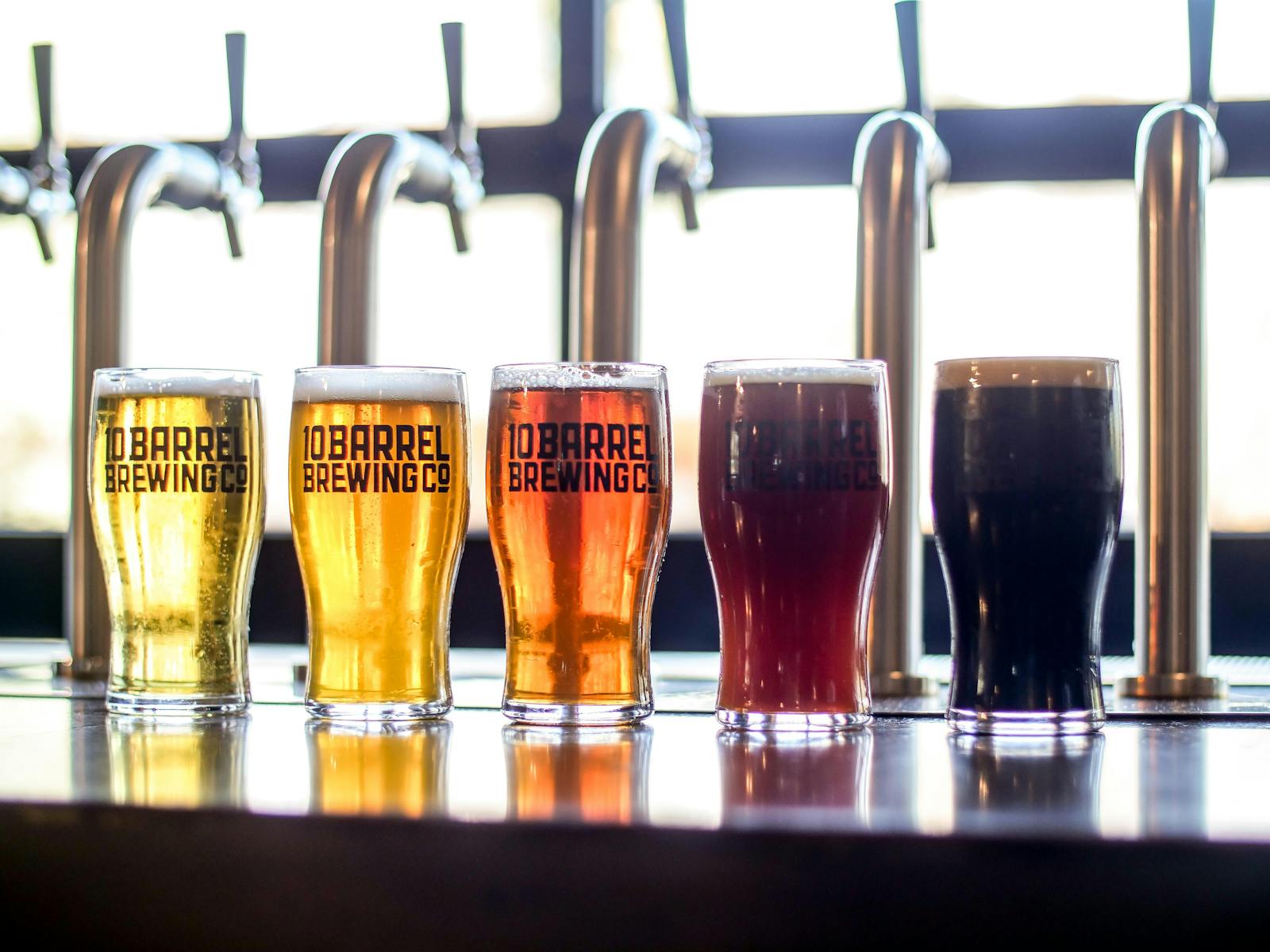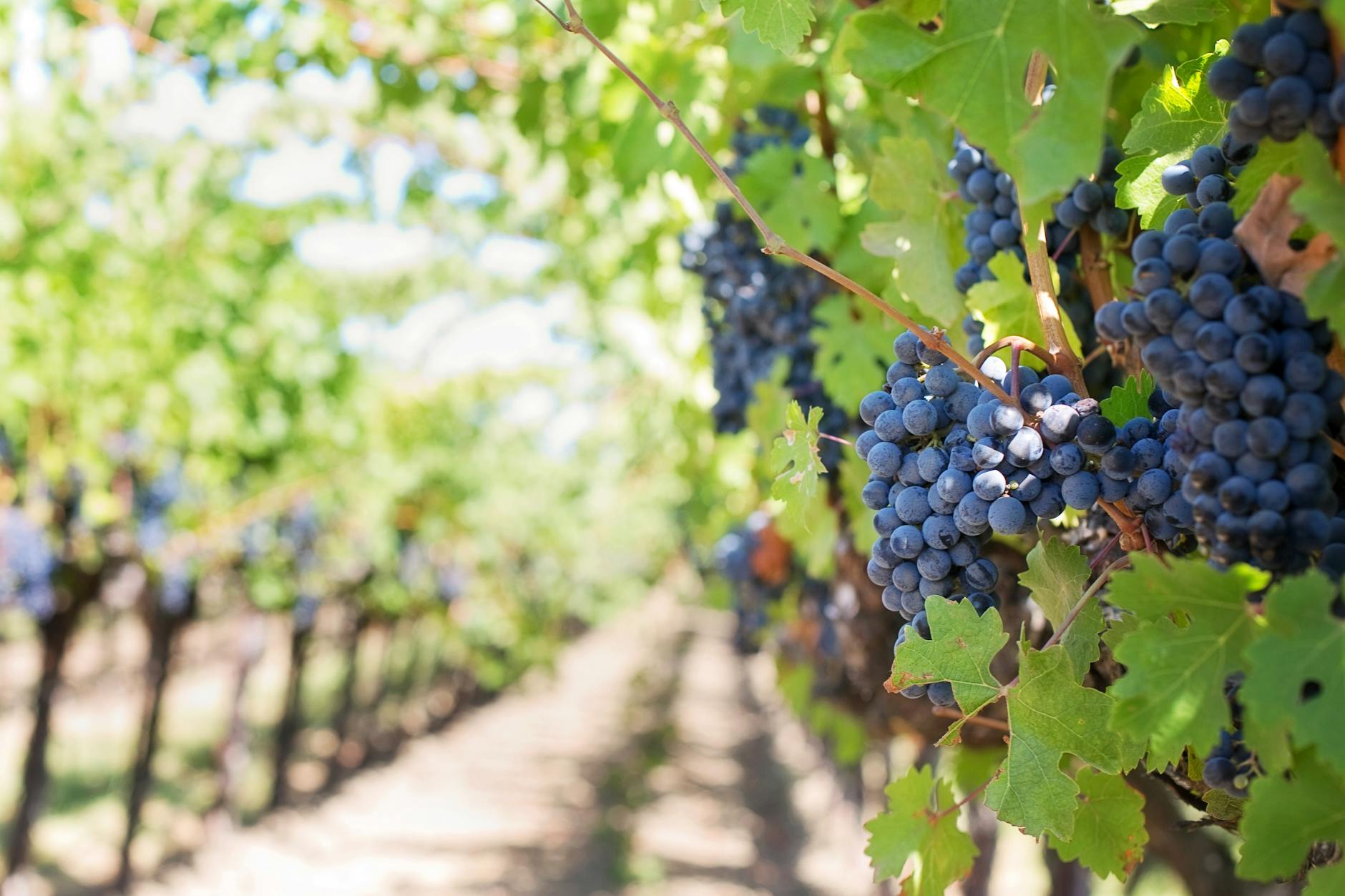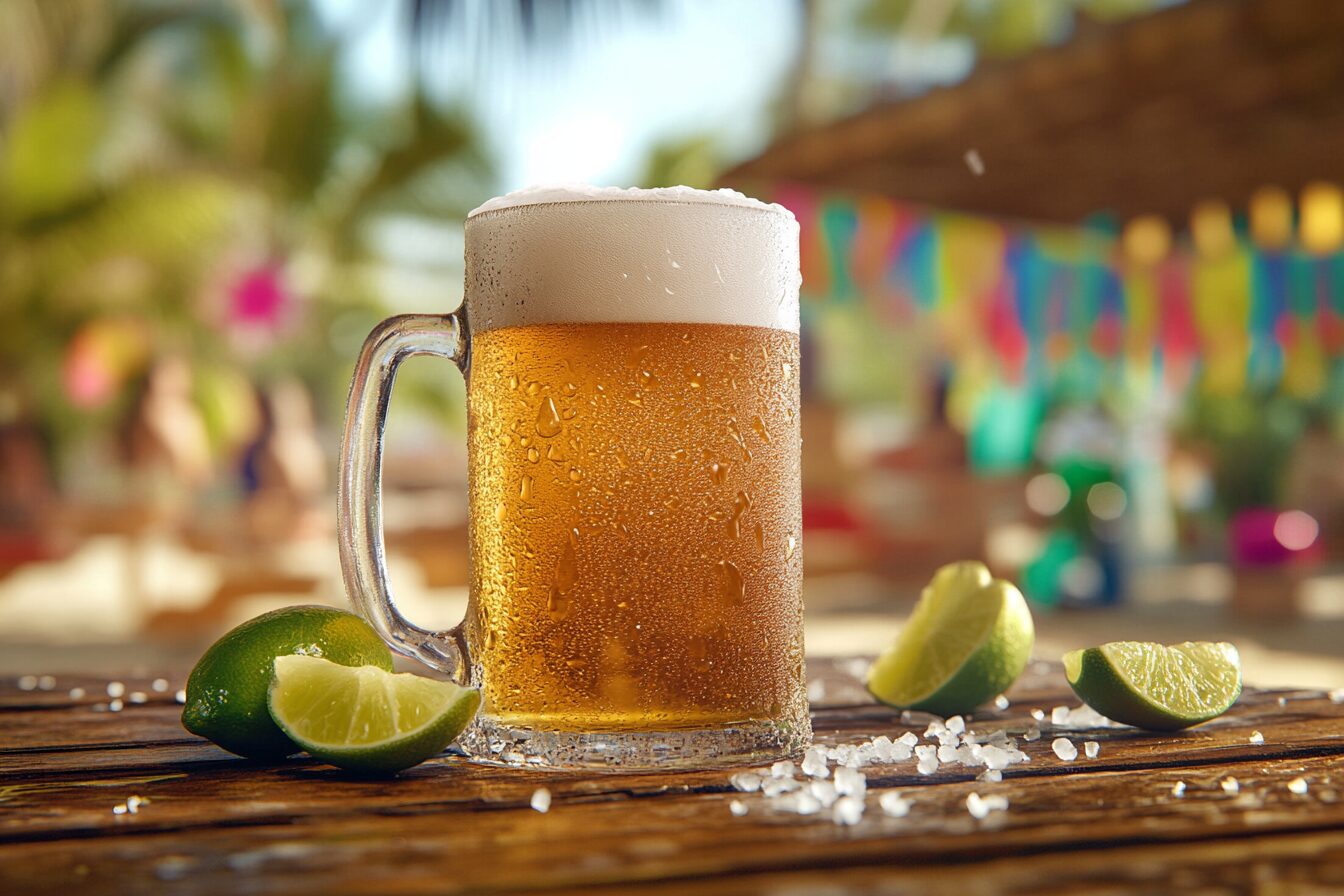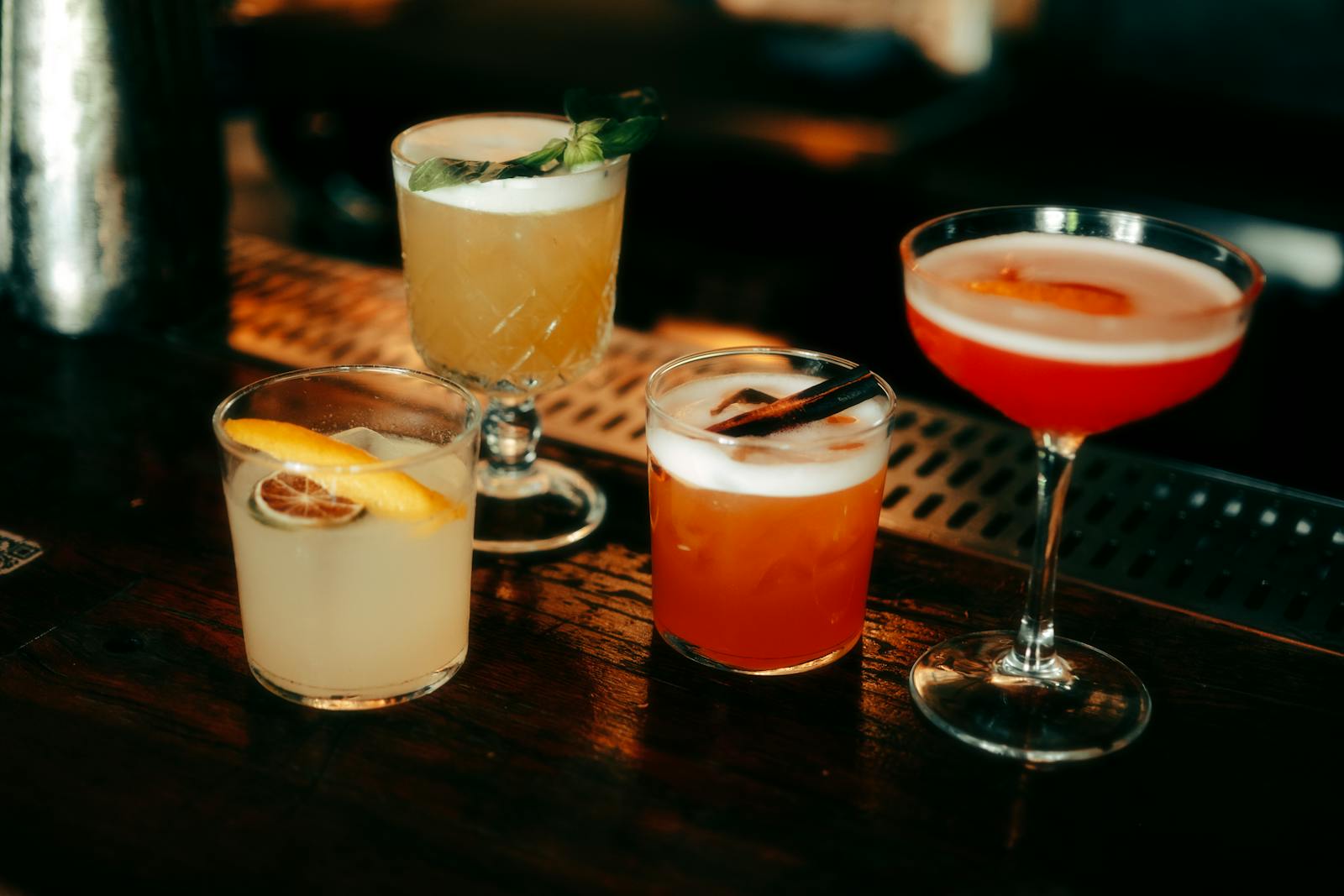Craft Beer Overview
Craft Beer Thrills
Crack open a craft beer, and you’re stepping into a fun house of flavors. These brews are made by folks obsessed with quality, offering tastes you won’t get from your run-of-the-mill, big-brand beers. Whether you’re into a dark and cozy stout, a snappy lager, or a sour beer that puckers your lips, craft beers have got you covered.
Once you start with craft beers, you’ll never look back at the bland beers in the rearview mirror. I tried a craft beer that married chocolate with oranges, and boy, was it a wild ride for my taste buds. Each taste is an adventure, and the flavors can surprise you every single time.
| Beer Type | What Makes It Tick | Taste Vibe |
|---|---|---|
| Ales | Warmer fermenting temps | Fruity and quirky |
| Lagers | Cooler fermenting temps | Clean and sharp |
| Sours | Lactic acid happenings | Tart and zesty |
| Stouts | Dark malts, a smooth touch | Rich, toasty, choc-y |
Pure Brewing Magic
Craft beer is magic in the making. Every batch is born out of passion, with independent brewers putting their heart and soul into it. These aren’t just beers; they’re creations that tell a story. With top-notch ingredients and planet-friendly practices, these brewers whip up something special every time.
Sure, craft brewing takes its sweet time compared to the conveyor belt of mass beer production, but the results are worth the wait. Small batches give brewers the freedom to experiment and push the envelope, resulting in one-of-a-kind brews full of flavor and truth.
If you’re getting started or already hooked on the craft life, knowing the ins and outs of brewing can add layers to your drinking joy. From the temperature alchemy of fermentation to picking hops and grains, every choice shapes something remarkable.
Curious about all the beer types out there? Dive into our guide on types of beer and explore the colorful history that brews in your glass with the history of beer.
Evolution of Brewing
Craft beer’s like a time capsule, taking us on a flavorful trip through history that’s been brewing for centuries.
Historical Origins
Beer is one old-timer, popping up around 3500 BC when folks decided fermenting barley and hops was a grand idea. This bubbly beverage helped transition us from wandering nomads to settled farmers, as documented by Cablevey. Back in the day, brewing was all about working with what you had at hand—no fancy equipment or exotic ingredients.
Here’s a fun tidbit: the Pilgrims’ first permanent building in their new land? A brewery, of course. As brewing found its American roots, immigrants spiced things up with their native brewing traditions, resulting in those hoppy, crisp beers we love. This blend of influences gave birth to the vibrant craft beer scene we know today.
| Key Historical Milestones | Date |
|---|---|
| Origins of beer | 3500 BC |
| First brewery by Pilgrims | Early 1600s |
Impact of Prohibition
Prohibition in the U.S. (1920-1933) was like a bad hangover for breweries—many shuttered their doors, and the beer scene took a nosedive. When the ban was lifted, the industry slowly dusted itself off, with small-scale brewers making a comeback.
The craft beer revival really gained steam in the 60s and 70s, fueled by microbreweries offering unique, often quirky brews that stood out against big-name lagers. By the 80s, the movement caught fire, planting the seeds for today’s diverse craft beer boom, as shared by Nicks of Calvert.
And boy, did it take off! Between 2008 and 2016, the number of U.S. breweries shot up sixfold. 2018 saw over 6,300 craft breweries churning out 25 million barrels of beer, according to Brewbound. It’s clear that our love for hops and malt runs deep, as the beer scene keeps bubbling up with fresh ideas and flavors.
Getting to grips with brewing’s past gives you a front-row seat to the craft beer revolution. If you’re ready to dive into more details, check out our guide on types of beer or get the full scoop in our history of beer. Cheers to learning!
Rise of Craft Beer Movement
I gotta tell you, the craft beer world has exploded with creativity and all sorts of new flavors. It’s like watching a whole new chapter unfold in the beer story, and I’ve been hooked on learning how microbreweries and global trends are shaking things up in such a colorful way.
Emergence of Microbreweries
Microbreweries have really become the heart and soul of this craft beer boom. It’s kind of wild to think how a lot of this started back in the early ’80s, after the drag that was Prohibition shut down so many breweries (Cablevey). Fast forward a bit, and microbreweries started popping up like mushrooms after the rain, introducing wild new tastes and cool brewing techniques.
From 2008 to 2016, the number of breweries in the U.S. grew six times bigger, and they hired over 120% more folks to help craft this goodness (Nicks of Calvert). This explosion wasn’t just because people wanted different beers; it also pushed back against the big dogs like Anheuser-Busch InBev and MillerCoors. These little players didn’t just focus on their beer quality; they championed innovation and backed the local community, winning over beer lovers all over.
| Year | Number of Breweries (U.S.) |
|---|---|
| 2008 | 1,600 |
| 2016 | 6,300 |
| 2018 | Over 6,300 |
Global Market Trends
Taking a look at what’s happening around the globe, I’ve noticed craft beer fever didn’t just stay where it started – the U.S. and the UK, back in the swinging ’60s and ’70s (Nicks of Calvert). It’s gone worldwide in a big way.
Since 2009, folks in the industry have cranked out over 25 million barrels just by 2018. If you ask many beer fans, IPAs (India Pale Ales) are the top choice, making up more than 30% of the craft beer folks guzzle. And, get this, about 10% of all the beer goes directly to drinkers every year, proving just how much folks love backing their local brew masters (Brewbound).
Jumping into craft beer isn’t just about savoring unique tastes – you’re also giving local money a boost and bringing brewers and aficionados together. Whether you’re a newbie to craft beer or a homebrew wizard on the hunt for bold new flavors, there’s no time like now to jump into this scene. Want to know more about different beers? Check out our guide on types of beer.
Craft Beer Definition
Craft beer has charmed both dedicated beer lovers and those just testing the waters. It’s like that intriguing friend who always has a fresh story to tell. But what makes craft beer special? Let’s unlock what makes this brew tick and why it’s got folks raising their glasses more than ever.
Characteristics of Craft Beer
Craft beer is where brewing meets imagination. Typically, these gems are brought to life by those small, spunky brewers or microbreweries who have a knack for whipping up unique concoctions. Here are some tasty tidbits about craft beer:
- Small Batch Magic: Crafted in limited amounts, each batch packs a punch of originality, letting you taste something special with every sip.
- Flavor Fun Fair: Imagine a rollercoaster of taste—from hoppy highs to fruity swings to malty dives. Craft beers serve up a full spectrum of flavors.
- Independent Spirit: These brews aren’t just drinks. They’re a badge of independence, made without the heavy hand of big corporations steering their flavor.
- Artisanal Touch: Every bottle reflects a mix of creative techniques and ingredients, making it a masterpiece in a glass.
If you’re thirsty for knowledge about various beer types, take a look at types of beer and quench your curiosity.
Craft Beer Criteria
What does it take for a beer to earn the craft label? It’s not just about the taste. There are some standards, set by brewing organizations, to follow:
- Size Matters, But Bigger Isn’t Always Better: Craft breweries keep it cozy, brewing no more than 6 million barrels a year.
- Stay Independent: To wave the craft banner, the brewery should have less than 25% ownership by industry giants who aren’t in the craft game.
- Let the Creativity Flow: These artisans thrive on trying new things and flexing their creative muscles, leading to beers that surprise and delight.
- Community Cheerleader: Craft brewers often have deep roots in their community, forming partnerships and celebrating local connections that give back just as much as they brew up.
Curious how craft brews stack up against others? Check out this craft beer comparison to see who’s ahead in the flavor game. Craft beer is a dynamic dance of tradition and innovation, promising a fresh adventure with every glass you lift. Cheers!
Benefits of Craft Beer
Craft beer isn’t just about quenching your thirst on a hot day; there are perks you probably didn’t see coming. From giving your health a little boost to cheering on your local community, craft beer’s got more going for it than just great taste.
Health Benefits
Surprise! Craft beer isn’t just for happy hour—it’s also packing some sneaky health perks. Loaded with antioxidants, proteins, and a lineup of vitamins like the B complex, it might just play nice with your overall wellness. In fact, some folks say the hops might even pitch in on keeping your brain sharp (Portugal Farm Experience).
Plus, many craft brews sport a higher alcohol content compared to the big-name brands, often hanging around 5% to 10% ABV, with some daredevils climbing over 20% (Portugal Farm Experience). This means you might sip less but still enjoy more—so fewer calories, if you keep it chill.
| Health Perks | What They Do |
|---|---|
| Antioxidants | Giving those cells a little extra defense. |
| Protein | Helps patch up those muscles after a workout. |
| Vitamin B Complex | Keeps your energy and metabolism in check. |
| Silicon | Walking tall with stronger bones. |
| Hops | Brain booster, perhaps? |
Community Support
When I crack open a local craft brew, I’m not just tasting hops and dreams—I’m investing in my community. These brews usually lean heavily on local goodies, sticking to fresh and organic when they can (Portugal Farm Experience). So, when I buy local, I’m backing farmers and helping to keep neighborhood jobs buzzing.
Craft breweries aren’t just brewers, they’re community hubs too. They host gigs, back charities, and create spaces where folks like me can mingle and share a pint. It’s this warm, inviting vibe that makes craft beer and its culture something truly special (Portugal Farm Experience). Being part of this scene just amps up my enduring love for craft brews.
With every craft beer I choose, I’m savoring distinctive flavors, supporting local economies, and reaping the health benefits. Whether I’m chilling at the brewery or kicking back on my couch, I feel a part of something much bigger. Curious about different craft beer styles? Check out our types of beer section for more beer-y goodness!
Types of Beer
Getting to know the different types of beer is like opening a door to a richer world of craft magic. I’ve figured out that beers usually buddy up into three groups: lagers, ales, and hybrids. Each one’s got its own quirks and brew-tacular ways.
Lager vs. Ale
Lagers and ales are your go-to champs in the beer world, splitting mainly because they like to bubble differently:
-
Lagers chill out with bottom-fermenting yeasts that dig cooler digs. This chill mode brings about a crisp and clean taste. Classic beer names like Miller High Life, Coors, Budweiser, and Yuengling are like comfy couches—easy to vibe with for newcomers. Think of lagers as the gentle introduction to the bubbly universe. They break down further into types like Pilsners and American Lagers. Wild fact: In 2021, lager beers rang up a solid US$328.4 billion in the global market, planning to climb some more at 2.9% yearly from 2022 to 2027 (EHL Insights).
-
Ales, on the flip side, are top-fermenters and like it warm and snappy. They don’t hang around too long, making flavors that are like a mystery novel—complex and varied. Ales have their own fam: Stouts, Porters, Blonde Ales, Pale Ales, and India Pale Ales (IPAs). Each subcategory scratches a different itch: Stouts are like a coffee dream, while Blonde Ales are the sunny-side sweetness (EHL Insights).
Here’s a quick cheat sheet:
| Type of Beer | Fermentation Mood | Yeast Groove | Taste Vibe |
|---|---|---|---|
| Lager | Cool and collected | Bottom-fermenting | Crisp and clean |
| Ale | Warm and quick | Top-fermenting | Complex and varied |
For the full scoop, check out my escapades in beer vs ale.
Hybrid Beers
Hybrid beers are like those mad science experiments but taste a lot better. They mix and match lager and ale charms, making a combo that surprises and delights. Whether they flirt with the yeast like a lager at cozy temperatures or flip the script, these beers are endlessly interesting. They’re the versatile pals of beer—perfectly unpredictable.
Hybrid beers are catching eyeballs, and for a good reason! Whether I feel like sipping a light, refreshing lager or losing myself in the aromatic dance of an ale, hybrids offer the best of both hoppy worlds. It’s all about grabbing that drink that sings to the soul.
As I scout this brew-filled trail, uncovering dark beer choices, sour beers, and even gluten-free options is bound to jazz up my beer journey. Cheers to great discoveries!
Popular Beer Styles
Dipping my toes into the land of craft beers, I’ve stumbled upon some exciting styles that not only tickle my taste buds but also fuel my home brewing dreams. Let’s talk about two favorites—classic lagers and those bold India Pale Ales (IPAs)—perfect for beginners and craft beer aficionados alike.
Classic Lagers
Now, classic lagers are like the trusty old friends in the beer world. We’ve got names you know like Miller High Life, Coors, Budweiser, and Yuengling. These are usually my go-to recommendations for anyone just entering the world of craft beer. Why? They’re solid, uncomplicated, and welcome you with a hug of familiar flavors. A big name in the beer game from Boston Beer Co. says lagers aren’t about blowing your taste buds out of the water, which makes them a fantastic starting point (TIME).
Lagers have cousins like Pilsner and American Lager, and guess what? Their market flew up to around US$328.4 billion in 2021. Predictions are pointing towards even more coin, with a potential jump to US$391.1 billion by 2027 (EHL Insights). That’s a whole lotta suds!
Here’s a quick look at some beloved lagers:
| Beer | Flavor Profile | Alcohol Content (%) |
|---|---|---|
| Miller High Life | Light and crisp | 4.6 |
| Coors | Smooth and refreshing | 5.0 |
| Budweiser | Malty with a hint of hop | 5.0 |
| Yuengling | Caramel notes, balanced | 4.5 |
Want to know more about different brews? Take a peek at my guide on types of beer.
India Pale Ales (IPAs)
Now entering the ring, India Pale Ales—better known as IPAs. These bad boys carry a hop punch that’s not easy to ignore. From West Coast to British, to New England, there’s an IPA style for every mood swing. Each one’s unique, like different genres of music:
- New England IPAs: Fruity and juicy, with a haze that invites mystery and low bitterness to boot.
- British IPAs: These bring a maltier vibe with a bit of bitterness—a nice balance if you like a blend.
- West Coast IPAs: Imagine fruity notes tagging along with a bitter chaser, offering a complex delight for your palate.
The fun flavors of IPAs explain why folks are drawn to them like bees to honey. Keeps the tasting adventures rolling!
Here’s a breakdown of different IPA delights:
| IPA Style | Flavor Profile | Common Hops |
|---|---|---|
| New England IPA | Fruity, juicy | Citra, Mosaic |
| British IPA | Malty, slightly bitter | Fuggles, East Kent Goldings |
| West Coast IPA | Balanced between fruit and bitter | Cascade, Centennial |
For the deep dive on IPAs, swing by my article on ipa beers.
Exploring these styles adds zest to the beer adventure. Be it the smooth feel of a lager or the boldness of an IPA, craft beer keeps tossing surprises my way. There’s nothing quite like kickin’ back with a cold one and soaking in the vibrant world of beer. Cheers!
Craft Beer Market Growth
Man, the craft beer game has been going off the charts the last ten years! It’s skyrocketed but left a mess of hurdles for newbies and old-timers in the brew biz. As I’ve gotten my hands into the current industry brew-ha-ha, I’ve stumbled upon some surprising trends and bumps that every beer-loving soul should keep an eye on.
Industry Challenges
Overcrowding is a big hiccup in the biz. With over 6,300 craft beer joints in the U.S. alone, things are pretty crowded. Even the big dogs like Boston Beer Company and Sierra Nevada have felt the pinch, seeing sales drop as new joints pop up like daisies (Brewbound). Major beer beasts like Anheuser-Busch InBev and New Belgium are even laying people off—courtesy of changing beer tastes and the crazy number of breweries around.
To put things in perspective, the whole beer shindig has sort of slumped from pouring out 213 million barrels back in 2008 to about 204 million in 2017. The craft beer pace has chilled to a 5% growth, with numbers projected to nosedive a little more soon. To give the big guys a run for their money, some breweries are rolling out light lagers, trying to win over the light-beer folks (Brewbound).
| Year | Total Beer Production (Million Barrels) | Craft Beer Growth Rate (%) |
|---|---|---|
| 2008 | 213 | – |
| 2017 | 204 | 5 |
Market Trends and Forecasts
Don’t get it twisted, though—craft beer’s still holding its own. With rad flavors, styles, and brewing tricks, the scene’s alive and kicking. Homebrewers have been a blast too, stirring up even more interest in the beer scene, leading to over 4,200 new breweries since 2010 and a thirst for another 15 million barrels of craft beer (Brewbound).
Back in 2018, craft folks churned out over 25 million barrels of beer, with IPAs grabbing more than 30% of that action. As folks’ flavor wants change, some breweries are even selling about 10% of their magic juice straight to you guys each year (Brewbound).
The craft beer world is ever-changing and I’m pumped to see where it heads. New trends are popping up left and right, so why not dive into the crazy selection of brew flavors by peeping our guide on craft beer flavors and taste what this exciting world has in store? Whether you’re checking out fresh seasonal brews or hopping on to beer subscriptions, there’s always something new to tickle your taste buds in the craft beer universe.
Affiliate Disclosure: This post may contain affiliate links. If you click and purchase through one of these links, we may receive a small commission at no extra cost to you. Thank you for your support!




